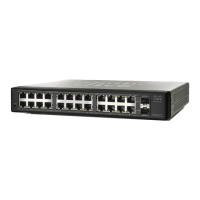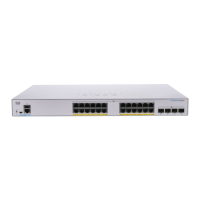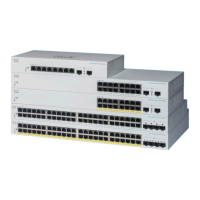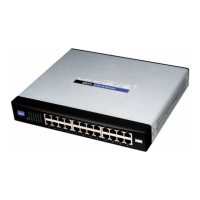Port Management
Link Aggregation
Cisco Small Business 200 Series Smart Switch Administration Guide 125
10
• If the port LACP priority of the link is lower than that of the currently-active link members, and the
number of active members is already at the maximum number, the link is made inactive, and placed in
standby mode.
LACP With No Link Partner
In order for LACP to create a LAG, the ports on both link ends should be configured for LACP, meaning that
the ports send LACP PDUs and handle received PDUs.
However, there are cases when one link partner is temporarily not configured for LACP. One example for
such case is when the link partner is on a device, which is in the process of receiving its configuration using
the auto-config protocol. This device's ports are not yet configured to LACP. If the LAG link cannot come up,
the device cannot ever become configured. A similar case occurs with dual-NIC network-boot computers
(e.g. PXE), which receive their LAG configuration only after they bootup.
When several LACP-configured ports are configured, and the link comes up in one or more ports but there
are no LACP responses from the link partner for those ports, the first port that had link up is added to the
LACP LAG and becomes active (the other ports become non-candidates). In this way, the neighbor device
can, for example, get its IP Address using DHCP and get its configuration using auto-configuration.
Setting LACP Parameter Settings
Use the LACP page to configure the candidate ports for the LAG and to configure the LACP parameters per
port.
With all factors equal, when the LAG is configured with more candidate ports than the maximum number of
active ports allowed (8), the device selects ports as active from the dynamic LAG on the device that has the
highest priority.
NOTE The LACP setting is irrelevant on ports that are not members of a dynamic LAG.
To d e f i n e t h e L A C P s e t t i n g s :
STEP 1 Click Port Management > Link Aggregation > LACP.
STEP 2 Enter the LACP System Priority. See LACP Priority and Rules.
STEP 3 Select a port, and click Edit.
STEP 4 Enter the values for the following fields:
• Port—Select the port number to which timeout and priority values are assigned.
• LACP Port Priority—Enter the LACP priority value for the port. See Setting LACP Parameter
Settings.
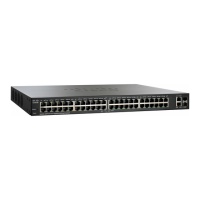
